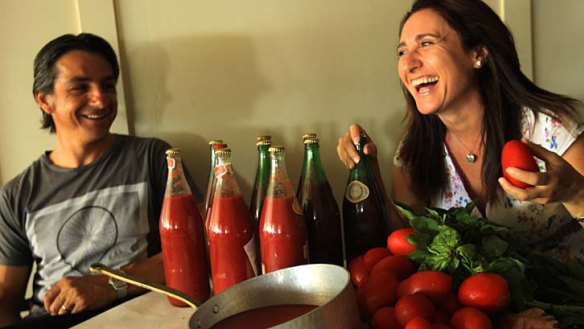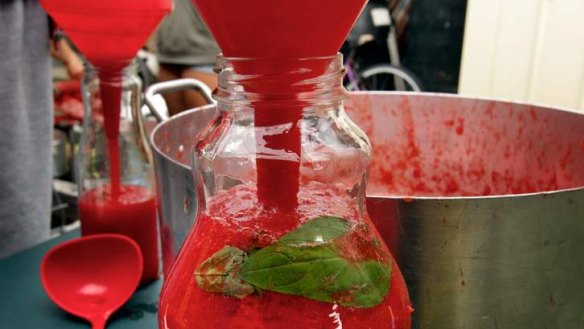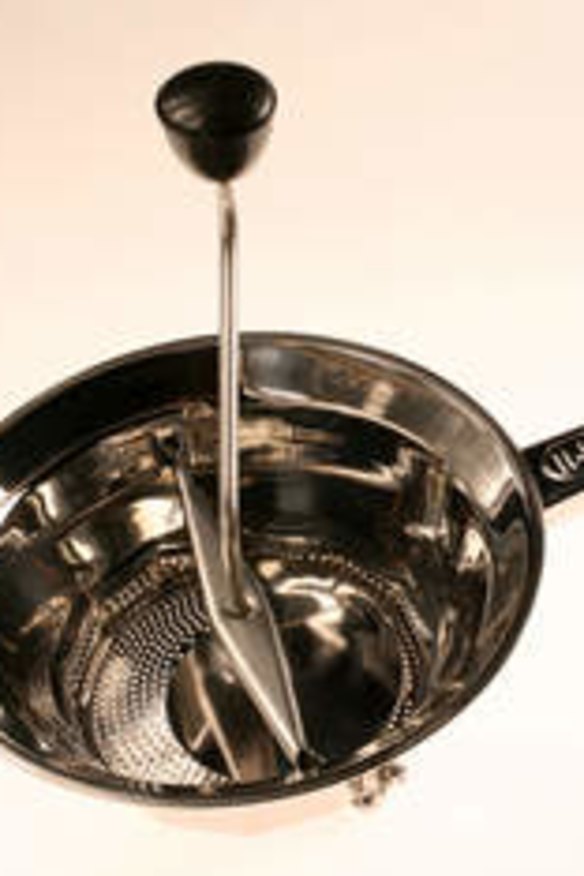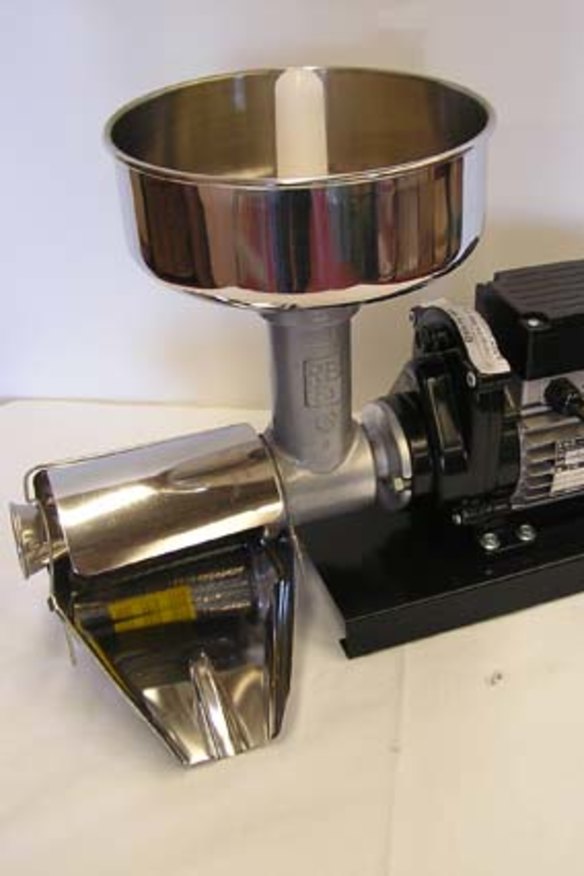How to make passata
Giovanni Pilu and Marilyn Annecchini make passata every summer - enough for two and a half families for a whole year. They share their tips and a recipe with Justine Costigan.

If you have Italian origins you're probably already familiar with the late summer ritual of bottling tomatoes to preserve them for use throughout the year. Being able to produce a bottle of passata in the middle of winter to bring the flavour of summer to a pasta sauce is one of the great pleasures of preserving.
In what is often an extended family occasion, getting everyone to pitch in with the work means a couple of hundred kilograms of tomatoes can be efficiently transformed into a year's supply of passata for several families in a day.
Giovanni Pilu and Marilyn Annecchini from Sydney's Pilu at Freshwater make passata every summer with Annecchini's family on the New South Wales central coast. Originally from Abruzzo, the Annecchinis keep their passata simple – using only perfectly ripe tomatoes and a large basil leaf in every bottle.

Pilu says every region and every family has its own recipe for passata, with some adding a touch of salt or olive oil to the bottle. He prefers to keep it simple, adding salt and other flavours when the passata is used in cooking throughout the year.
“I ring the guys at the market to see when the tomatoes will be ready. They have to be spot on, and they know exactly when it's a good time to buy,” says Pilu. “We love the ritual of making passata,” he says. The kids, the whole family, gets involved.”
MAKING PASSATA

Pilu advises cooking passata lightly, so that you don't lose the freshness of the puree. He says it is perfect for using to create a simple pasta sauce, such as puttanesca. He shares his passata-making tips and pasta recipe below.
Ingredients:
- Vine ripened San Marzano tomatoes at the peak of the season (any time from late January to early March depending on the weather). Ask your greengrocer or market stallholder to let you know when they will be available. Roma tomatoes can be substituted if you can't get hold of San Marzano. One kilogram of tomatoes will make about one 750ml bottle of passata. Annecchini and Pilu's family buys 20 boxes of tomatoes, each box weighing 20 kilograms, for their passata-making day, making enough passata for two-and-a-half families for one year.
- Fresh basil leaves. One large or a couple of small basil leaves per bottle of passata. Wash and dry the leaves before use.

Equipment:
- A tomato press, either manual or electric. A mouli is a good substitute for small quantities of tomatoes.
- A funnel.
- 750ml beer bottles or glass jars.
- Bottle caps and a capping machine or tightly fitting lids if using jars.
- Large stock pot (Annecchini and Pilu use a large drum and boil their bottles over an open fire).
Method:
Wash the tomatoes to remove any dirt or grit.
Blanch the tomatoes in boiling water for 20 to 30 seconds and then scoop them out with a colander or strainer. The skins should be starting to come away from the flesh at this point.
Turn the tomatoes into a bowl lined with a clean tea towel to drain any excess water.
Run the tomatoes through the tomato press to separate the juice from the skins and flesh. To do this, place the tomatoes in the bowl of your tomato press or mouli then turn the handle to start the process. The machine will squeeze the ripe tomatoes to extract the juice while separating the liquid from the skins and flesh.
You'll need a large bowl or jug to catch the juice as it is squeezed. A tomato press is the most efficient way to extract the maximum amount of juice from your tomatoes. Manual and electric versions are available and for large quantities of tomatoes an electric press is recommended.
Give the leftover flesh and skin a second run through the machine to extract more juice, then discard.
In each clean, sterilised bottle, drop in a large basil leaf then, using a funnel, fill the bottles, leaving a 4cm gap at the top of each bottle.
Seal the bottles using a capping machine or if using jars, tightly screw on the sterilised lids.
Put a thick tea-towel at the bottom of your pot and lay the passata flat on the cloth, building up in layers until the pot is full or you have used up all your bottles (jars can be left upright). Fill the pot with cold water and slowly bring to the boil. Boil for 30 minutes then turn off the heat (or put out your fire) and leave the bottles in the pot to cool for 24 hours. Remove the bottles, dry and store them in a cool dark place.
Passata will keep for up to three years but can also be used immediately.
Giovanni Pilu's puttanesca sauce
500g pasta (bucatini, linguine or spaghetti work well)
1 bottle tomato passata (750ml)
2 anchovy fillets
100g good quality pitted black olives such as Kalamata, roughly chopped
50g salted capers, rinsed and roughly chopped
100ml olive oil
1 clove of garlic, peeled and lightly crushed
1 chilli (fresh, dried or a good pinch of chilli flakes)
Chopped parsley
Gently fry garlic, chilli and anchovy fillets in the oil. Mash the anchovies with a wooden spoon until they have completely dissolved.
Remove the garlic. Add the passata, olives and capers and cook over a medium high heat for 15 to 20 minutes.
Cook the pasta until al dente, drain and add to the pan with the sauce. Toss the pasta with the sauce and heat gently for a couple of minutes.
Sprinkle with parsley and serve.
Equipment suppliers
Costante imports
377-379 Bell Street, Preston
03 9484 7948
www.costanteimports.com.au
Cooperage Wine & Beer Making Supplies
Unit 2/895 The Horsely Drive, Smithfield
02 9604 6655
www.cooperagebrew.com.au
www.kitchenwaredirect.com.au
Cellar Plus
106-110 Peel Street, North Melbourne
03 9328 1843
www.cellarplus.com.au
Giovanni Pilu will be cooking brunch at The Sydney Morning Herald Growers' Market on Saturday March 1, at 8.30am and 10.30am. Details: nswfoodandwine.com.au
The best recipes from Australia's leading chefs straight to your inbox.
Sign up